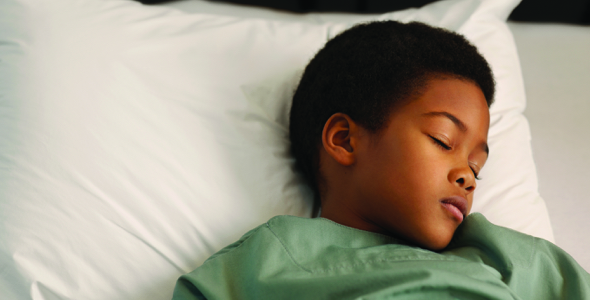By the bioMérieux Connection Editors
COVID-19 has not affected children as frequently or as severely as adults, but many parents may be anxious to know more about how the disease could affect their children. There may be questions about what symptoms to watch out for, how easily a child could pass an infection to another person, and other areas of concern. Researchers are working hard to answer these questions, and there is still a lot to learn, but staying informed with the latest information is helpful.
How common is COVID-19 in children?
Data from different countries show varying infection rates among children, but even so, children account for only a small fraction of COVID-19 cases in all locations. In the United States, 2% of confirmed COVID-19 cases have been among people under age 18. Within the population of those under age 18, 59% of cases occurred in children over age 10, according to the CDC.
How does COVID-19 present in children?
According to current research, children with COVID-19 usually have milder symptoms compared to adults. One early study from researchers in China suggests that the vast majority of children, possibly as many as 90%, may be asymptomatic or experience only very mild symptoms. Below is a list of the most common signs of COVID-19 in children that have been observed so far:
- Fever
- Cough
- Nasal congestion
- Sore throat
There are other symptoms that kids may also experience, such as nausea and diarrhea, but they are not as common as those listed above, according to the CDC. Many signs of COVID-19 overlap with other illnesses, such as the flu, common cold, pneumonia, and even allergies. Because of these similarities, it is very important for parents to bring a child who has symptoms to the doctor for testing and diagnosis. Based on test results, the doctor can make recommendations, prescribe treatment, and help decide if further testing of household members or quarantine are needed.
Can COVID-19 lead to further complications in children?
Studies from around the world have reported various serious complications that may be associated with COVID-19 in children. For example, in late April, health care providers in Washington State identified young COVID-19 patients with multisystem inflammatory syndrome in children (MIS-C). MIS-C is a very rare condition that can leave lasting scars on the lungs and lead to more severe illness. From March through July, the CDC reported 570 total COVID-19-associated MIS-C cases in the United States—two thirds of the children with MIS-C did not have preexisting medical conditions before contracting COVID-19.
“While MIS-C is very rare, parents should be aware it can happen and contact their health care provider if their children develop new or unusual symptoms,” said Dr. Kathy Lofy, Washington state health officer for the Department Of Health.
How likely are kids to transmit COVID-19 to others?
Research has been mixed on the role children may play in the spread of COVID-19. Some evidence shows that children under age 10 are less-effective transmitters of the virus and rarely are the first case in family units who become infected. Children age 10 and older, however, may be just as likely as adults to spread the virus—although the reasons for this difference in transmission among ages are not yet well understood.
Although children 10 and younger may be less-effective transmitters, that does not mean that they can’t be infected with or spread the virus at all. A study detailing a COVID-19 outbreak at a Georgia summer camp showed that kids ages 6-10 were actually the most likely to test positive for the virus among those 21 years of age or younger. A research letter published in JAMA Pediatrics also found that children under 5 with mild to moderate COVID-19 carried greater amounts of the virus than adults. Community infection rates also likely have an impact on virus transmission among children, with lower rates of transmission in communities where the overall infection rate is lower to begin with.
What can parents do to help protect kids from COVID-19?
Taking preventive measures is important to protect both kids and adults from COVID-19. Following are a few basic precautions—more detail can be found on the CDC’s website.
- Wear a mask. Wearing a mask when in a public space can help reduce disease transmission. If possible, parents should make sure that kids over age 2 also wear masks in these situations. Do not put a mask on a child under age 2 or anyone who has trouble breathing, is unconscious, incapacitated, or otherwise unable to remove the mask without assistance.
- Wash your hands. Parents should make sure that kids wash their hands often with soap and water for at least 20 seconds, especially after being in a public place, blowing their nose, coughing, or sneezing. A good way to ensure the correct amount of time is to sing “Happy Birthday” twice—and if you get tired of that, there are other songs that work too.
- Social distance. Stay at least 6 feet away from anyone outside of your household. Although enforcing distance with young children can be difficult, parents should do their best to help kids keep a safe distance.
- Keep things clean. Cleaning and disinfecting “high touch” surfaces, such as doorknobs, is especially important.
- Stay vigilant. Keep an eye out for symptoms and seek medical attention if you suspect you may have COVID-19.
While it is difficult to say exactly what role children may play in spreading COVID-19, and children make up a small percentage of cases, parents should still take preventive measures and follow guidelines in the event a child or other family member gets sick.
Opinions expressed in this article are not necessarily those of bioMérieux, Inc.



